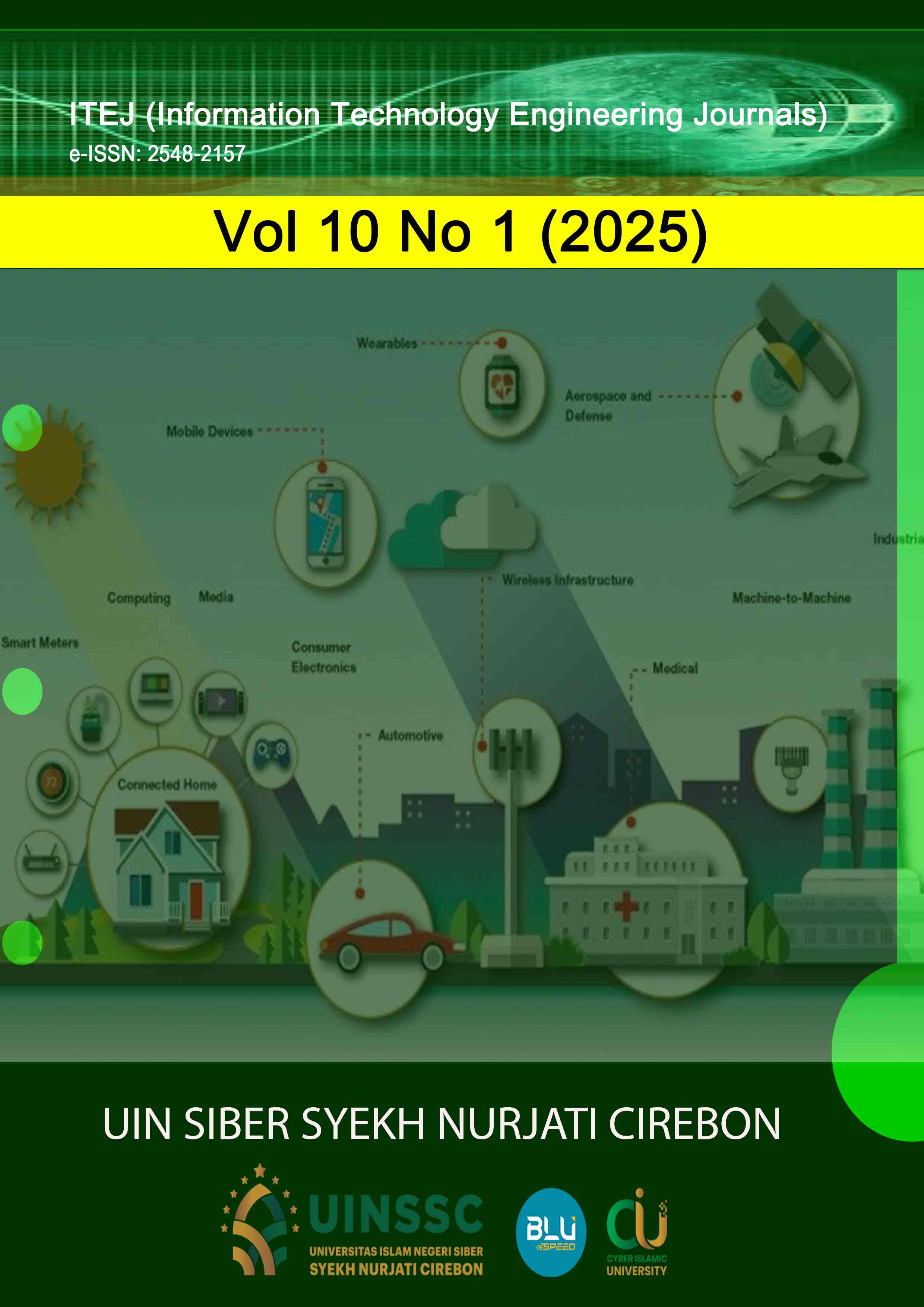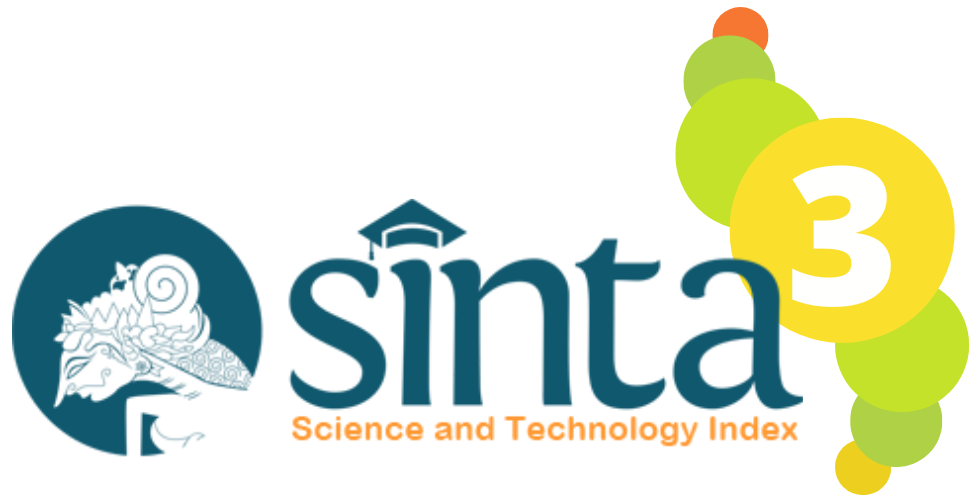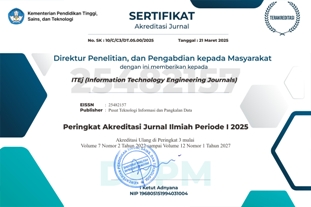Developing Pedagogically Aligned AR Media for Teaching Polyhedra in Junior Secondary Education
Abstract
This study presents the design and evaluation of marker-based augmented reality instructional media using Unity and Vuforia to support polyhedra learning in junior high school geometry. The development followed the 4D model and was grounded in a five-phase learning trajectory consisting of exploration, manipulation, analysis, application, and reflection. The AR media features interactive 3D polyhedron models, net unfolding animation, and formula overlays, each activated through printed markers. The design was informed by students’ learning needs, particularly difficulties in visualizing shapes, distinguishing surface area from volume, and applying geometric formulas correctly. Expert validation using Aiken’s V confirmed strong instructional alignment. Student perception data, classroom observations, and teacher interviews indicated that the media enhanced spatial reasoning, improved engagement, and encouraged verbal mathematical discourse. The findings support the integration of AR into structured pedagogical sequences and demonstrate its potential to improve geometry instruction in diverse classroom settings.
Downloads
References
E. G. de Ravé, F. J. Jiménez-Hornero, A. B. Ariza-Villaverde, and J. Taguas-Ruiz, “DiedricAR: a mobile augmented reality system designed for the ubiquitous descriptive geometry learning,” Multimed. Tools Appl., vol. 75, no. 16, pp. 9641–9663, Aug. 2016, doi: https://doi.org/10.1007/s11042-016-3384-4.
E. İbili, M. Çat, D. Resnyansky, S. Şahin, and M. Billinghurst, “An assessment of geometry teaching supported with augmented reality teaching materials to enhance students’ 3D geometry thinking skills,” Int. J. Math. Educ. Sci. Technol., vol. 51, no. 2, pp. 224–246, Feb. 2020, doi: https://doi.org/10.1080/0020739X.2019.1583382.
D. Wood, J. S. Bruner, and G. Ross, “The role of tutoring in problem solving,” J. child Psychol. psychiatry, vol. 17, no. 2, pp. 89–100, 1976.
R. Fernández-Enríquez and L. Delgado-Martín, “Augmented Reality as a Didactic Resource for Teaching Mathematics,” Appl. Sci., vol. 10, no. 7, p. 2560, Apr. 2020, doi: https://doi.org/10.3390/app10072560.
N. P. Dinayusadewi and G. N. S. Agustika, “Development Of Augmented Reality Application As A Mathematics Learning Media In Elementary School Geometry Materials,” J. Educ. Technol., vol. 4, no. 2, p. 204, Jul. 2020, doi: https://doi.org/10.23887/jet.v4i2.25372.
G. K. Beisenbayeva, A. M. Mubarakov, Z. T. Seylova, L. U. Zhadrayeva, and B. N. Artymbayeva, “Evaluating the Impact of an Augmented Reality App on Geometry Learning in Kazakh Secondary Schools,” J. Inf. Technol. Educ. Res., vol. 23, p. 022, 2024, doi: https://doi.org/10.28945/5355.
W. Tarng, J.-K. Huang, and K.-L. Ou, “Improving Elementary Students’ Geometric Understanding Through Augmented Reality and Its Performance Evaluation,” Systems, vol. 12, no. 11, p. 493, Nov. 2024, doi: https://doi.org/10.3390/systems12110493.
A. Uriarte-Portillo, R. Zatarain-Cabada, M. L. Barrón-Estrada, M. B. Ibáñez, and L.-M. González-Barrón, “Intelligent Augmented Reality for Learning Geometry,” Information, vol. 14, no. 4, p. 245, Apr. 2023, doi: https://doi.org/10.3390/info14040245.
P. Thamrongrat, “The Effectiveness of Augmented Reality with Gamification in Learning 3D Geometry,” University of Leicester, 2021. [Online]. Available: https://figshare.le.ac.uk/articles/thesis/The_Effectiveness_of_Augmented_Reality_with_Gamification_in_Learning_3D_Geometry/16593008?file=30717602
V. Rossano, R. Lanzilotti, A. Cazzolla, and T. Roselli, “Augmented Reality to Support Geometry Learning,” IEEE Access, vol. 8, pp. 107772–107780, 2020, doi: https://doi.org/10.1109/ACCESS.2020.3000990.
M. Badiee Razavi, “Using Augmented Reality Technology in Geometry Learning for Elementary School Students,” Linnaeus University, 2024. [Online]. Available: https://lnu.diva-portal.org/smash/record.jsf?pid=diva2%3A1874862&dswid=-5088
A. Amrinada, A. A. Prayoga, D. A. Ninda Asyifa, M. R. Qurota Ayun, and A. H. Abidah, “Technology-Based Learning Through Unity Application in Teaching Spatial Volume of Geometric Shapes for 6th Grade Elementary School Students,” J. Softw. Eng. Inf. Commun. Technol., vol. 3, no. 1, pp. 35–44, Jun. 2022, doi: https://doi.org/10.17509/seict.v3i1.59651.
R. Chonchaiya and N. Srithammee, “Augmented Reality as a Tool for Enhancing Geometry Learning and Improving Mathematical Understanding,” ECTI Trans. Comput. Inf. Technol., vol. 19, no. 2, pp. 350–363, Apr. 2025, doi: https://doi.org/10.37936/ecti-cit.2025192.260291.
S. Sunandar, A. W. Rahmawati, and A. Buchori, “Development of game education basic virtual augmented reality in geometry learning,” Test Eng. Manag, vol. 82, pp. 1471–1479, 2020, [Online]. Available: https://www.academia.edu/download/84177199/1093-Article_Text-1974-1-10-20200107.pdf
U. L. Yuhana, R. R. Hariadi, M. Mukramin, H. Fabroyir, and S. Arifiani, “AUGGO: Augmented Reality and Marker-based Application for Learning Geometry in Elementary Schools,” in 2020 International Conference on Computer Engineering, Network, and Intelligent Multimedia (CENIM), Nov. 2020, pp. 116–120. doi: https://doi.org/10.1109/CENIM51130.2020.9298003.
H. Nindiasari et al., “The use of augmented reality to improve students’ geometry concept problem-solving skills through the STEAM approach,” Infin. J., vol. 13, no. 1, pp. 119–138, Jan. 2024, doi: 10.22460/infinity.v13i1.p119-138.
J. Bruner, “Learning About Learning,” in A Conference Report, 1966, p. 276. [Online]. Available: https://files.eric.ed.gov/fulltext/ED015492.pdf
P. M. van Hiele, Structure and insight: A theory of mathematics education. Orlando, Fla.: Academic Press, 1986. [Online]. Available: https://cir.nii.ac.jp/crid/1130000795426623744
D. Agustina, “Pengembangan Modul Matematika Berbantu CABRI 3D Dengan Pendekatan Pbl (Problem Based Learing) Pada Materi Persamaan Garis Lurus,” Aksioma, 2017, doi: https://doi.org/10.26877/aks.v7i1.1411.
A. A. Haqq, A. Suyitno, and Zaenuri, “The use of van Hiele theory as a theoretical framework for technology-assisted geometry learning,” 2023, p. 040081. doi: https://doi.org/10.1063/5.0125835.
M. F. Amir, “Developing 3Dmetric Media Prototype through a Hypothetical Learning Trajector to Train Students Spatial Skill.” Jan. 04, 2019. doi: https://doi.org/10.31227/osf.io/vmk45.
S. Thiagarajan, D. S. Semmel, and M. I. Semmel, Instructional development for training teachers of exceptional children: A sourcebook. Minnesota: Leadership Training Institute/Special Education, University of Minnesota, 1974. [Online]. Available: https://dwijanto77.wordpress.com/wp-content/uploads/2013/04/thiagarajan.pdf
É. Brousseau, “Théorie des contrats, coordination interentreprises et frontières de la firme,” Les Front. la firme, 1997, [Online]. Available: https://www.researchgate.net/profile/Eric-Brousseau/publication/297411548_Theorie_des_contrats_coordination_interentreprises_et_frontieres_de_la_Firme/links/56deec6308ae6a46a1849836/Theorie-des-contrats-coordination-interentreprises-et-frontieres-de-la-Firme.pdf
P. Swanborn, Case Study Research: What, Why and How? 1 Oliver’s Yard, 55 City Road London Ec1y 1SP: SAGE Publications, Inc., 2010. doi: https://doi.org/10.4135/9781526485168.
P. Yaniawati, S. Sudirman, M. Mellawaty, R. Indrawan, and M. P. Mubarika, “The potential of mobile augmented reality as a didactic and pedagogical source in learning geometry 3D,” J. Technol. Sci. Educ., vol. 13, no. 1, p. 4, Jan. 2023, doi: https://doi.org/10.3926/jotse.1661.
N. V. Rashevska, S. O. Semerikov, N. O. Zinonos, V. V. Tkachuk, and M. P. Shyshkina, “Using augmented reality tools in the teaching of two-dimensional plane geometry,” Nov. 2020. doi: https://doi.org/10.31812/123456789/4116.
P. Sarkar, P. Sakhardande, U. Oza, and J. Pillai, “Study of Augmented Reality Interaction Mediums (AIMs) towards Collaboratively Solving Open-Ended Problems,” Int. Conf. Comput. Educ., Dec. 2019, doi: https://doi.org/10.58459/icce.2019.490.









